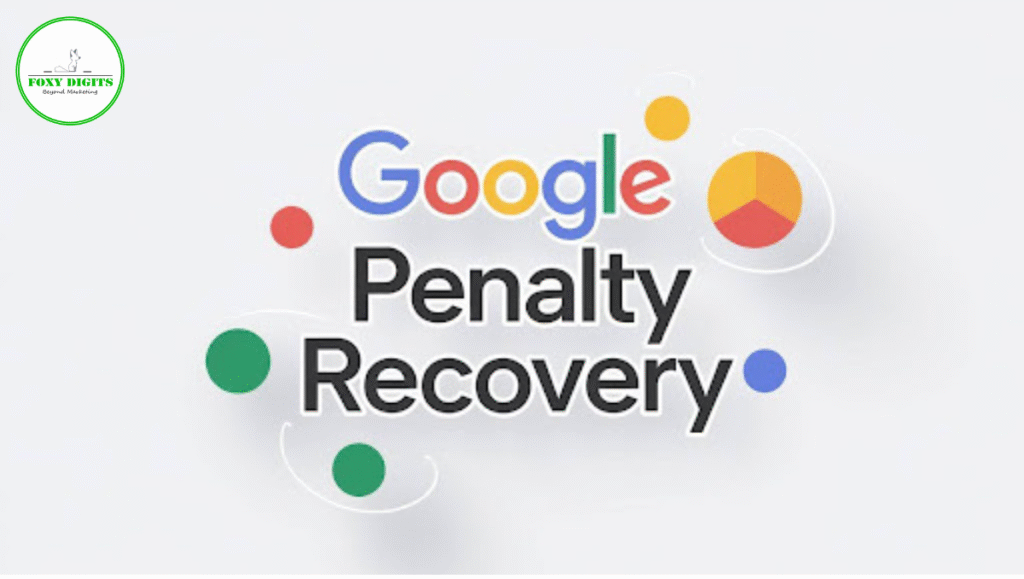In the world of digital marketing, a strong search engine presence is vital for business success. However, when a website is hit with a Google penalty, it can cause a sudden drop in rankings, traffic, and revenue. Whether it’s due to an algorithm update or a manual action, understanding how to recover is crucial. This guide explains what Google penalties are, why they happen, and the effective strategies for penalty recovery.
Understanding Google Penalties
A Google penalty occurs when your website is deemed to have violated Google’s Webmaster Guidelines. These penalties can be:
- Algorithmic Penalties – Triggered automatically when Google updates its algorithms, such as Panda, Penguin, or Helpful Content updates.
- Manual Penalties – Applied by Google’s review team when they detect spammy practices or violations.
Common Causes of Google Penalties
To effectively recover, you must first identify the cause of the penalty. Common reasons include:
- Unnatural Backlinks – Links from low-quality or spammy sites aimed at manipulating rankings.
- Thin or Duplicate Content – Low-value content that provides little or no unique information.
- Keyword Stuffing – Overusing keywords unnaturally within content.
- Cloaking or Sneaky Redirects – Showing different content to search engines than to users.
- Slow Page Speed & Poor UX – Sites that load slowly or have a poor user experience can also be affected.
- Mobile Unfriendliness – Websites not optimized for mobile may suffer penalties.
Step 1: Identify the Type of Penalty
Before making changes, determine whether your penalty is manual or algorithmic.
- Manual Action: Log in to Google Search Console and check the “Manual Actions” section. If you see a message, follow the listed guidelines.
- Algorithmic Penalty: Look for sudden traffic drops in Google Analytics that align with known algorithm updates.
Step 2: Audit Your Website
A comprehensive audit is the foundation for recovery. This includes:
- Backlink Audit: Use tools like Ahrefs, SEMrush, or Google Search Console to identify spammy backlinks.
- Content Audit: Check for duplicate, thin, or outdated content.
- Technical SEO Audit: Ensure your site has fast loading times, mobile optimization, and proper indexing.
Step 3: Remove or Disavow Harmful Backlinks
If unnatural backlinks are the problem:
- Contact webmasters to remove bad links.
- Use Google’s Disavow Tool for links you cannot remove.
- Focus on building high-quality backlinks from authoritative sources.
Step 4: Improve Content Quality
Content is one of Google’s top ranking factors. To recover:
- Rewrite thin or duplicate pages.
- Provide original, valuable, and well-structured information.
- Use a natural keyword strategy without overstuffing.
- Add visuals, infographics, and videos to improve engagement.
Step 5: Fix Technical Issues
A technically sound website is essential for recovery:
- Improve site speed with compression, caching, and optimized images.
- Ensure mobile responsiveness.
- Fix broken links and crawl errors.
- Use proper URL structure and schema markup.
Step 6: Submit a Reconsideration Request (Manual Penalties Only)
If you’ve received a manual penalty and made the necessary changes:
- Log into Google Search Console.
- Submit a detailed reconsideration request explaining the actions you’ve taken.
- Be honest and transparent about mistakes and fixes.
Step 7: Monitor and Maintain
Penalty recovery is not instant. It can take weeks or months for Google to re-evaluate your site. During this period:
- Keep producing high-quality content.
- Maintain a clean and ethical backlink profile.
- Stay updated on Google’s algorithm changes.
Preventing Future Penalties
Once recovered, you’ll want to avoid future penalties by:
- Following Google’s Webmaster Guidelines.
- Using white-hat SEO techniques.
- Regularly auditing your site for technical and content issues.
- Partnering with a trusted SEO agency that follows best practices.
Final Thoughts
Recovering from a Google penalty requires patience, thorough investigation, and strategic action. By identifying the cause, removing harmful practices, and improving your site’s overall quality, you can not only restore your rankings but also build a stronger, more penalty-proof online presence.
If penalty recovery feels overwhelming, consider working with experienced professionals who specialize in SEO services and penalty recovery. The right approach can bring your site back to life and even help it perform better than before.
